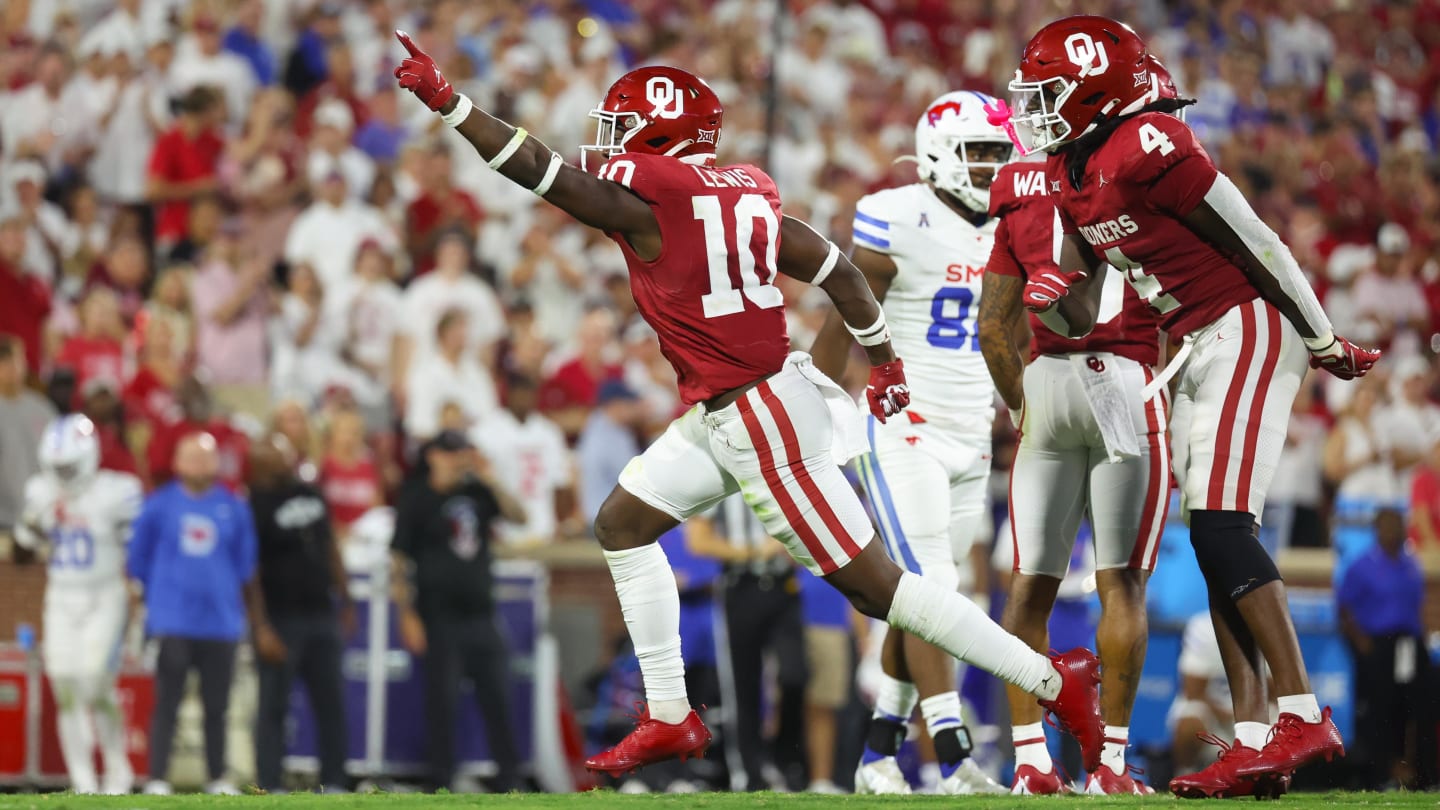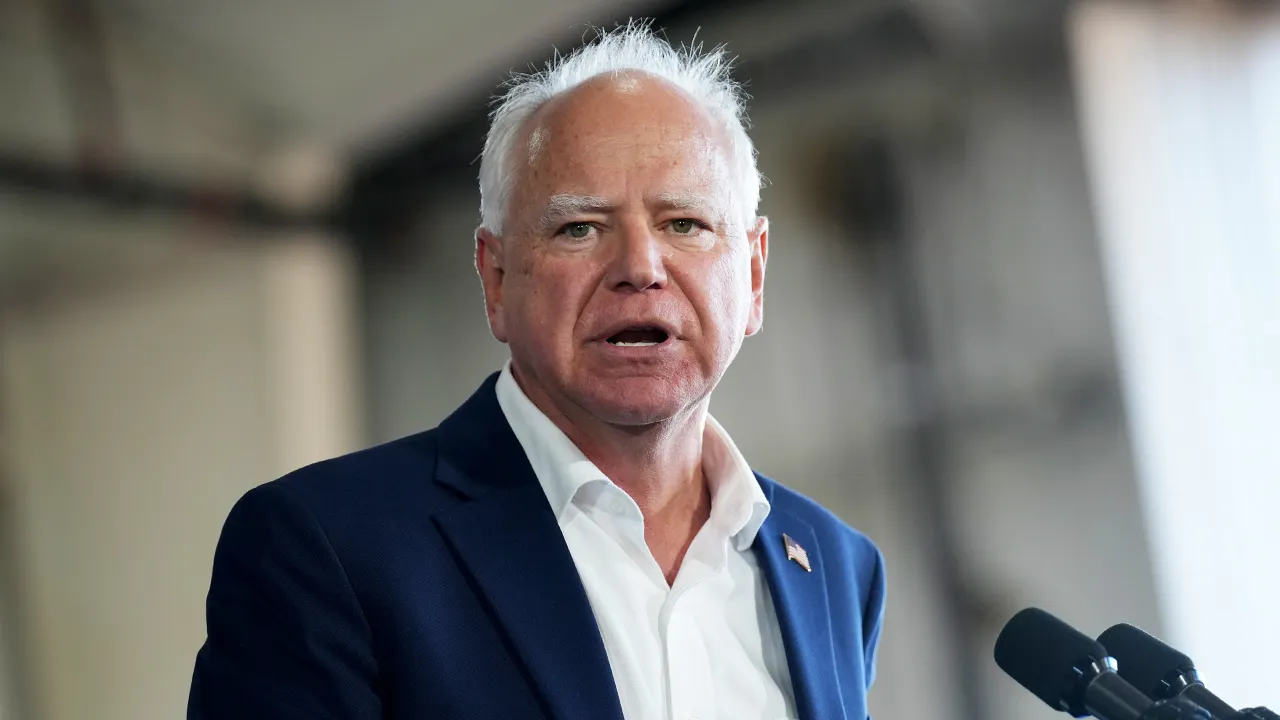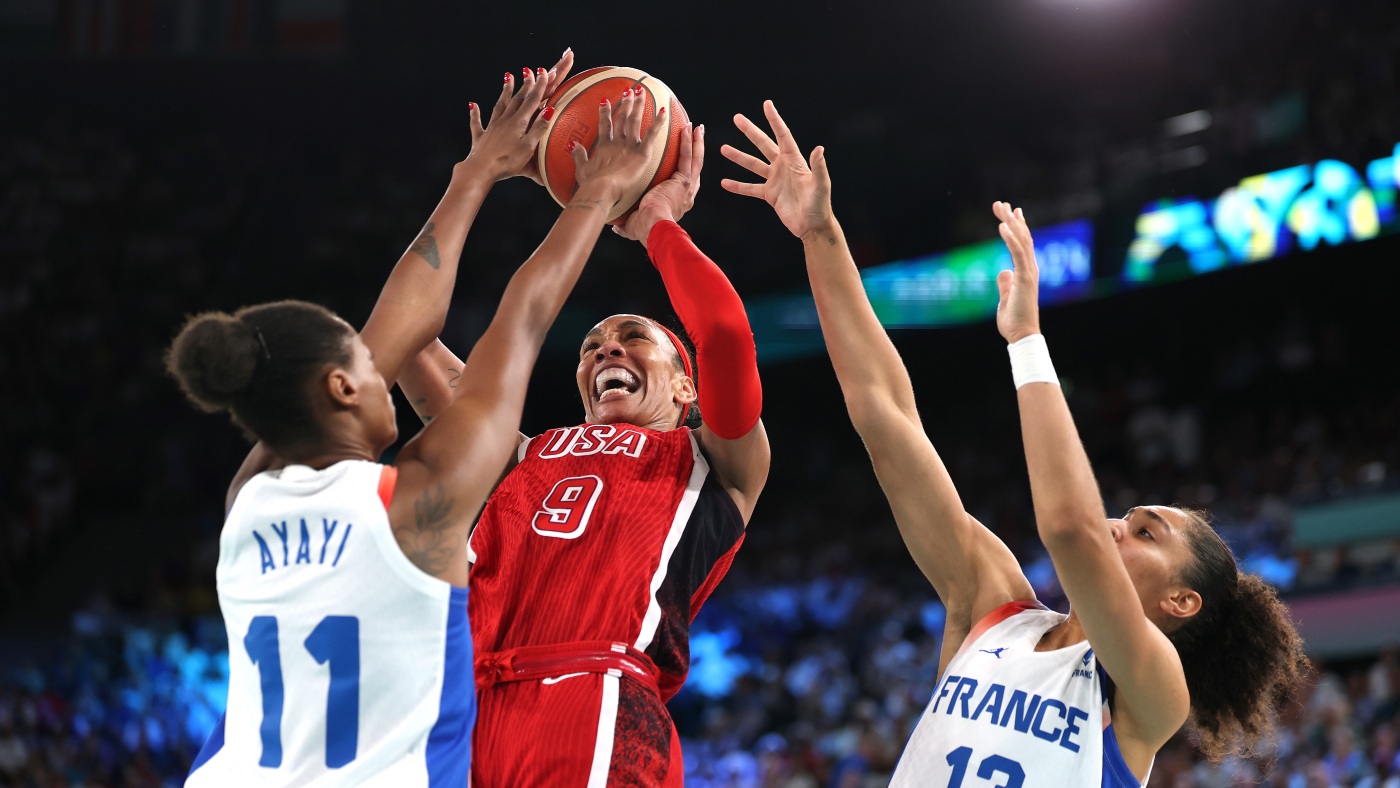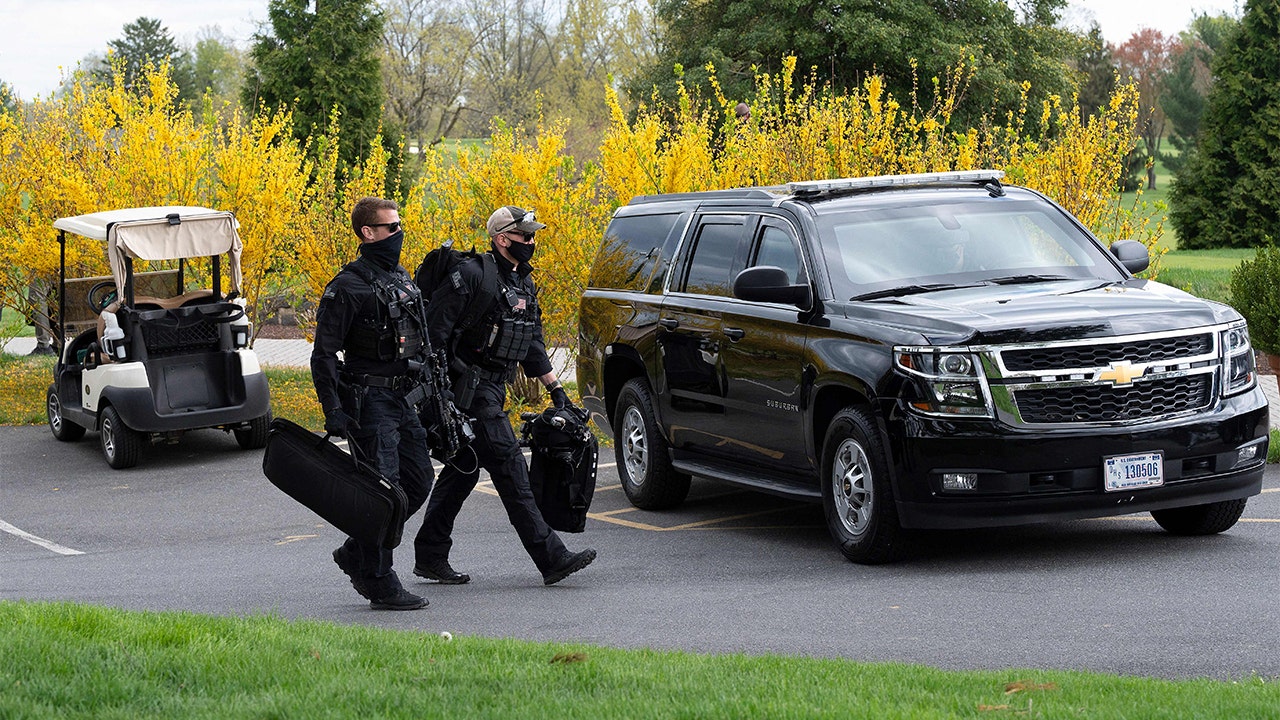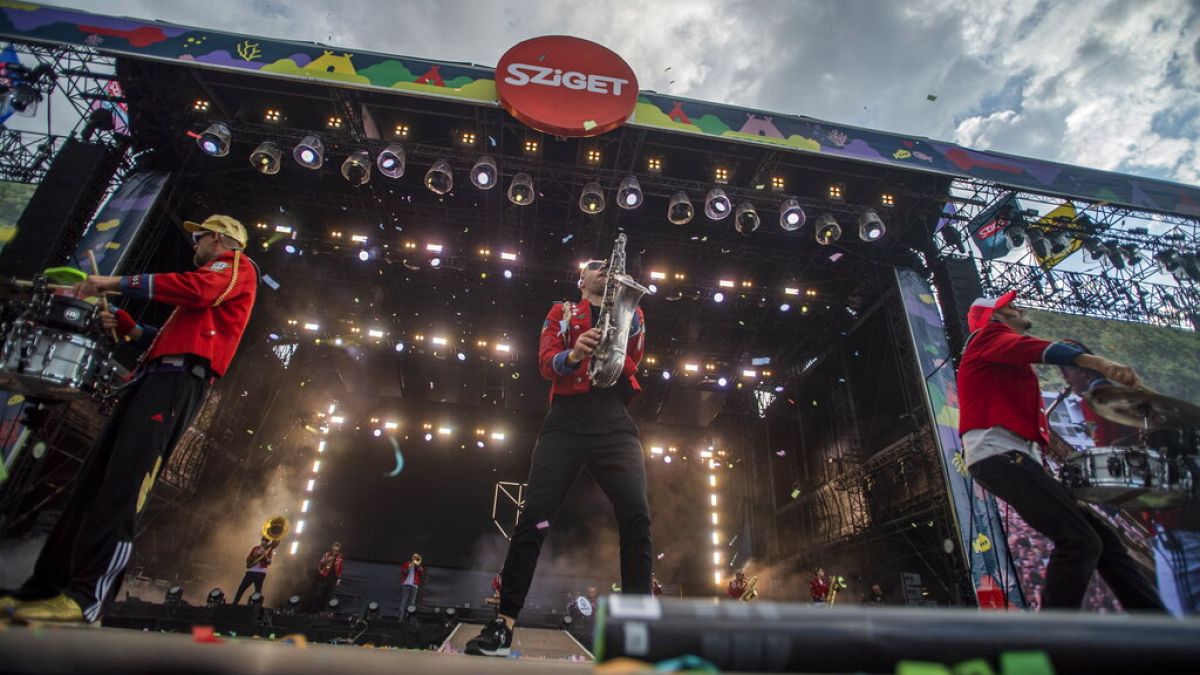Sports
Tim Tebow says it's 'more important than ever' to fight human trafficking, child exploitation
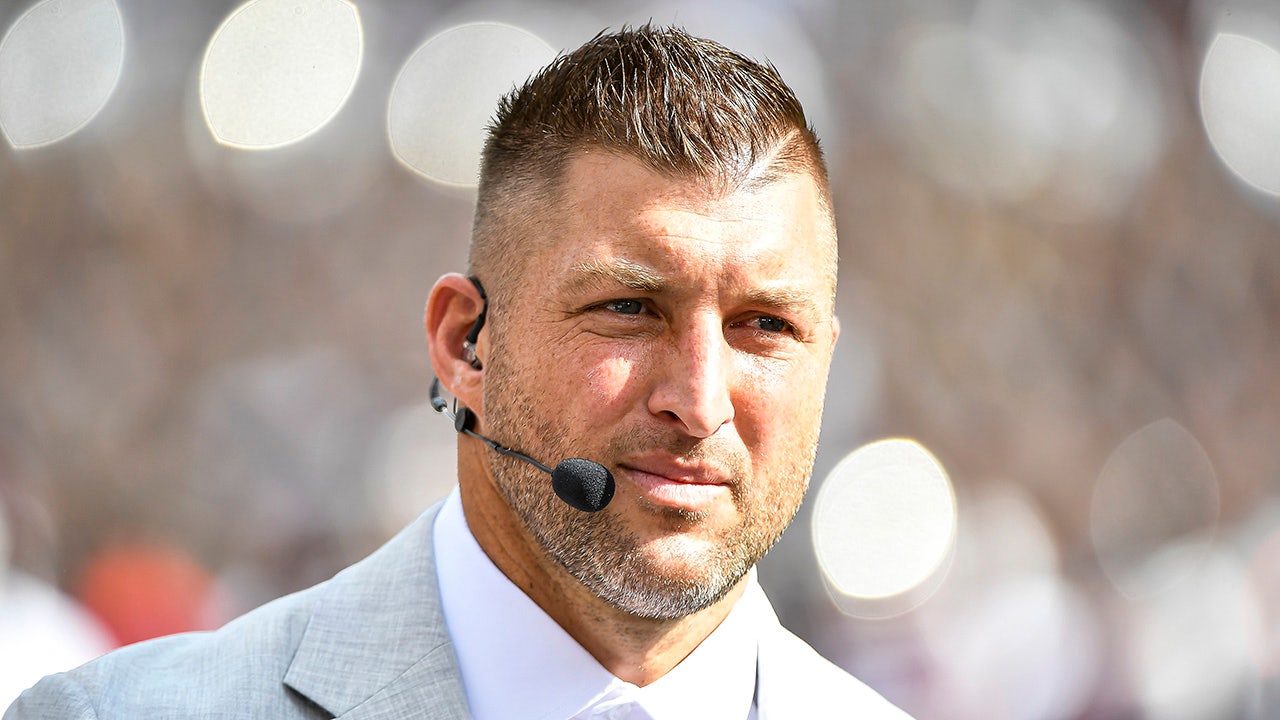
Tim Tebow fought hard to help the Florida Gators win national championships on the football field. But the toughest battle of his life has come on the front lines of the human trafficking fight.
Tebow appeared on “Fox News Live” on Sunday and said that the present is “more important than ever” to help fight human trafficking and child exploitation.
Former college football star Tim Tebow appeared on “Fox News Live” on Sunday and talked about his fight against child exploitation and human trafficking. (Logan Riely/Getty Images/File)
“We’ve been in this fight for over 10 years, since my dad was overseas and was able to purchase the freedom of four little girls,” the Heisman Trophy winner said. “And I just knew that day that I was called to fight for the most vulnerable. And that’s what we’re trying to do.
“And we’re fortunate to be able to do that. And just over 90 countries around the world … fight for the MVPs, the world’s most vulnerable people. But specifically, this campaign that we’re talking about today is for those boys and girls that are being exploited and being abused … many times in their own home.”
The former Denver Broncos quarterback gave some startling statistics about child sex abuse.
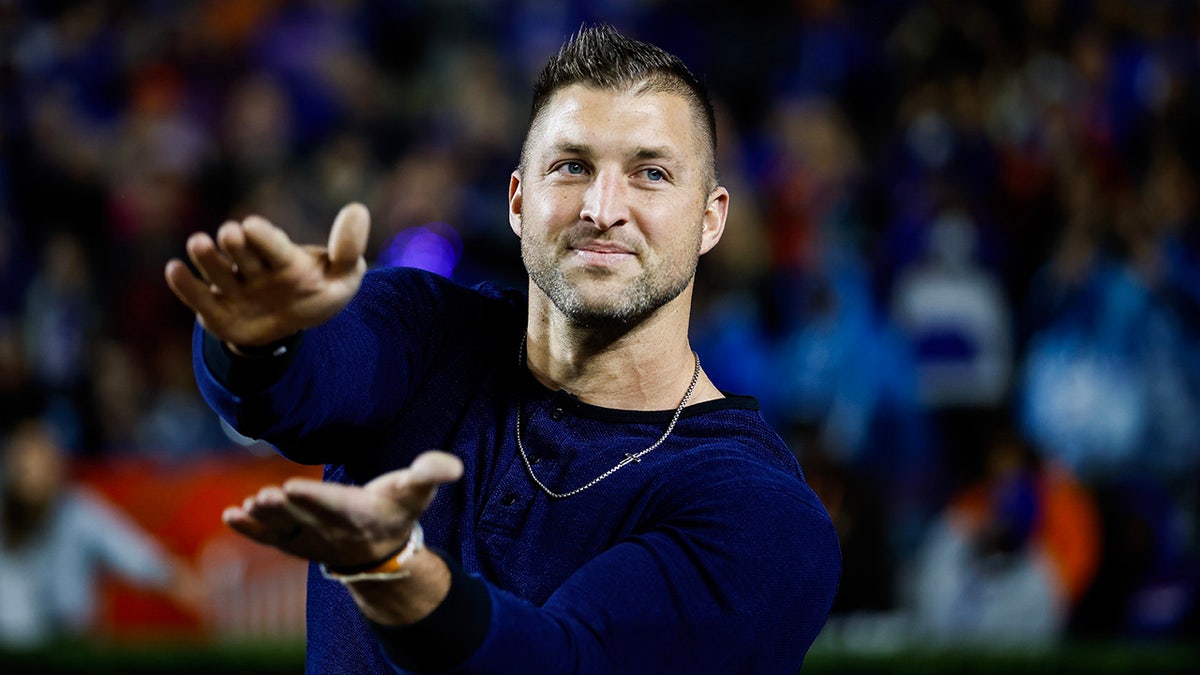
Former college football star Tim Tebow appeared on “Fox News Live” on Sunday and talked about his fight against child exploitation and human trafficking. (James Gilbert/Getty Images/File)
DEION SANDERS REFUSES TO TAKE QUESTION FROM REPORTER DURING PRESS CONFERENCE: ‘THEY KNOW WHAT THEY DID’
“In the last 12 months, there have been over 500,000 unique IP addresses that have downloaded and shared child sexual abuse material,” Tebow said. “And we know, on average, that 55 to 85% of those that are downloading and sharing it are also hands-on offenders. That means that there’s hundreds of thousands of boys and girls that are being abused, that are being hurt, that are being exploited, and we have to do something against it.
“Your average offender has 13 victims. That means there are so many boys and girls that we have to protect. You know, we’re calling this campaign ‘unknown and unfinished’ because we started it last year as unknown. But we’re unfinished because there are so many boys and girls that we haven’t got to. Yes, we made progress with our partners and nonprofit and law enforcement, but there’s so many more that we have to get to.”
The Tim Tebow Foundation works with law enforcement in hopes of bringing the abusers to justice. Tebow and the foundation worked with Homeland Security Investigations on “Operation Renewed Hope2,” a three-week “surge” of investigations into child abuse in 2023.
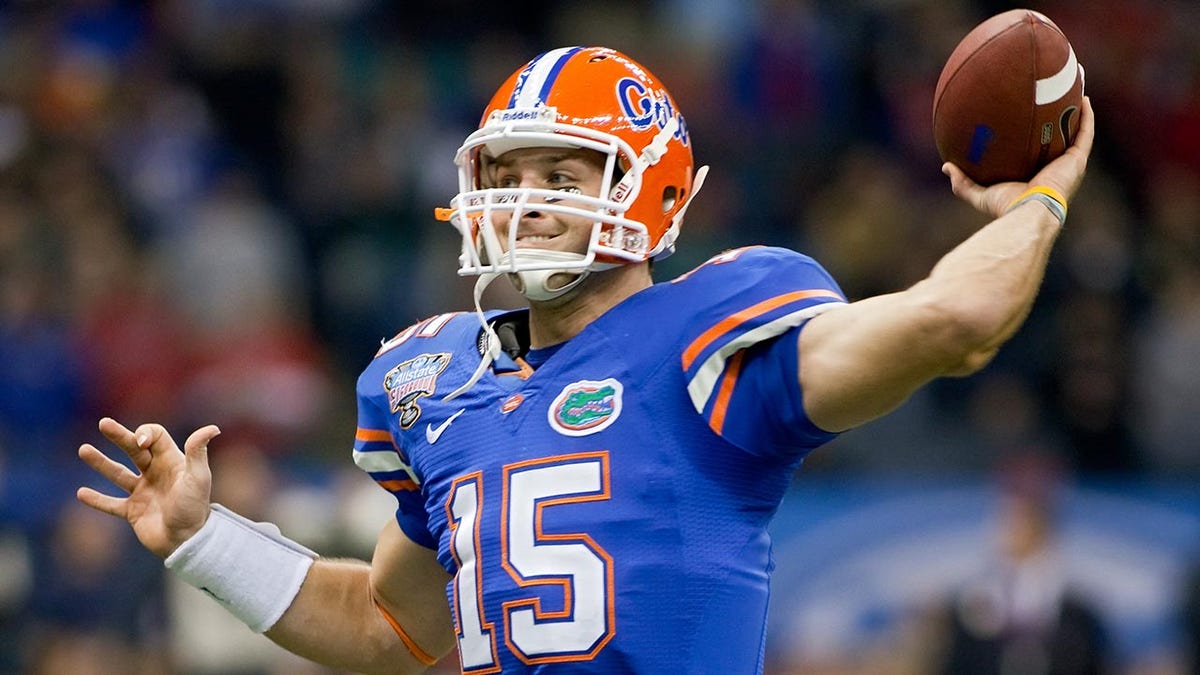
Tim Tebow (Icon Sport Media via Getty Images/File)
The foundation said it located “311 probable identifications of previously unknown victims, including 14 positive contacts and confirmed the rescue of several victims from active abuse.”
Follow Fox News Digital’s sports coverage on X and subscribe to the Fox News Sports Huddle newsletter.

Sports
Getting to the core of why NFL players love Pilates

Dexter Lawrence’s ability to make an entrance on opposing offenses often grants the New York Giants defensive lineman the final say.
Just go back to when he effectively ended the Giants’ wild-card win over the Minnesota Vikings by hitting quarterback Kirk Cousins on New York’s final defensive play of the game. Feeling the pressure of an onrushing lineman, Cousins threw the ball well short of a first down. Lawrence’s seven pressures, four QB hits, three hurries and six tackles (one for loss) helped the Giants to their first playoff win since 2012. But it was one of Lawrence’s numerous midgame quips that pointed to what was aiding the monstrous season and upcoming payday for the now two-time Pro Bowler.
“That Pilates be getting me right,” shouted Lawrence to teammate Leonard Williams.
“For real?” Wiliams responded in high-pitched disbelief.
Is the 6-foot-4, 340-pound All-Pro QB hunter seriously contorting his body in classes that evolved into a workout favored by New York City ballerinas?
“A lot of core work so that helps with my lower back,” Lawrence says. “Just flexibility and strengthening different areas.”
You may laugh, but NFL players of all shapes and sizes will do whatever it takes to be the best. The NFL has a long history of players using ballet and other forms of dance to differentiate their workouts from what goes on in the weight room and on the football field.
Pilates, which players have utilized for years now, is gaining devoted practitioners in part because of an explosion of social media video posts featuring their sweating and shaking workouts.
“I voluntarily go to go shake like a leaf and hold myself in these extremely challenging tough positions,” Dolphins linebacker Jaelan Phillips says. “It makes your body stronger but also makes your mind and soul and spirit stronger. I really leave Pilates with a glow.”
The Dolphins’ Jaelan Phillips touts the mind-body connection of Pilates training. (Charlotte Carroll / The Athletic)
One of those glowing days comes during a June one-on-one session at Fuerza Pilates in Studio City, Calif. For mere seconds, Phillips lies on his back. Those clock ticks aren’t a respite. Instead, they’re the in-between for Phillips’ next action.
Arms extended above his shoulders, Phillips grips one of the bars of the Cadillac — a trapeze table and to some a medieval torture-like bench overflowing with springs and straps hanging from a steel canopy. But for those in Pilates, it’s just another piece of equipment that can offer teachers, like Fuerza’s founder Nicky Lal, more variety.
As Phillips bends his knees into a tabletop position, Lal directs the 6-foot-5, 263-pounder to roll himself up and extend his legs out. Phillips then performs the task backward, slowly inching his lower back toward the table until his head briefly touches.
Again.
Phillips rolls up with Lal once more offering support for his feet as she directs him to sink his waist and pull his chest higher. All through the movements, Phillips maintains a steady inhale and exhale necessary for the practice.
“If you take that to the field, if you take that to really anything, (such as) anxiety, breathing can alleviate that,” Phillips says. “So Pilates is just like a microcosm of a lot of things that you can apply to real life that are beneficial for your health and wellness.”
Phillips suffered a groin injury in his first NFL training camp and hip flexor injuries throughout his 2021 rookie season. But his confidence in Pilates has blossomed since he started incorporating it into his workout regimen. The Dolphins bring in Jackie Bachor, who offers in-house Pilates sessions on Tuesdays during the season (player off days). Looking for ways to optimize his performance, Phillips started going weekly and he estimates about 10 of his teammates participate as well.
“As a football player, we’re so used to being big and strong and dominating in what we do,” Phillips says. “So … stepping out of your comfort zone to do something you’re not good at can be kind of daunting. And so doing Pilates the first time, it’s kind of embarrassing, right? You’re sitting there shaking, you’re trying to hold yourself.”
Phillips hasn’t dealt with hip flexor or groin issues since his rookie season, and he credits the deep core muscle work of Pilates for injury prevention. It has also given him a competitive edge — not only by productively utilizing his Tuesdays, but also by exposing his physical deficiencies.
“When you do something like Pilates, you can’t hide,” Phillips says.
But this offseason was different. Phillips suffered a torn Achilles tendon in late November. It’s the first lower-body injury that’s kept him out an extended period of time. After surgery, he couldn’t walk for three months. He calls rehab a “learning experience.”
Part of that process, before rejoining the Dolphins on the Physically Unable to Perform list to start training camp, included spending a month this summer in Los Angeles. He underwent physical therapy, chiropractic work, soft-tissue massage along with his usual workouts. He also incorporated Pilates for the first time during an offseason and connected with Lal through former UCLA teammates.
On the June afternoon that Phillips walked into Lal’s studio, Packers defensive tackle Kenny Clark had just finished a session. Clark, entering his ninth NFL season, would sign his third Packers contract valued at $64 million this summer. The three-time Pro Bowler has missed just one game over the past three seasons.
“You don’t really see a lot of men or bigger guys doing Pilates,” says Clark, who was initially skeptical of the exercise after being introduced by former Titans and Raiders linebacker Jayon Brown. “It was one of those things, like ‘I ain’t going to do it.’
“And then here I am.”
Clark has been working with Lal — who trains between 50-65 athlete clients, including NBA players — for three years. The Packers have had a reformer machine available to players for a number of years, and Lal works with Clark on his in-season off-days. There’s a mix of virtual sessions and a packed schedule during offseasons as her new studio (with high ceilings and longer reformers for taller, broader bodies) fills with visiting clients. Each session is customized, and often starts with a series of questions: Did a player just get off a plane? What workout are they on? How are they feeling?

Longtime NFL linebacker Anthony Barr works with Pilates instructor Nicky Lal. (Charlotte Carroll / The Athletic)
The morning Phillips arrives, he’s already completed physical therapy and conditioning, so their session is focused on active stretching. Phillips spends most of the class on the Cadillac apparatus, receiving hands-on instruction and frequent check-ins from Lal.
“I’m not trying to make my clients shake,” Lal says. “I’m not trying to push them to a limit that they’re going to break. My goal is to make them feel better and rejuvenated once they leave.
“I try to create a lot of different movements that they don’t get in the gym and in their workouts with their teams.”
As Phillips’ class winds down, he’s stretching out over a barrel — another piece of equipment — when the studio door opens and Chicago Bears center Coleman Shelton walks in.
While Lal specializes in athlete clients, she’s not the only instructor who’s taken on professional football players.
One of the first players Kristen Wolf trained at her Chicago studio was former Bears and Jets running back Matt Forte. Wolf has since moved her Superior Pilates studio up to Lake Forest, Ill., just a quick drive from Bears headquarters. Word of mouth did the rest.
“When they do it, they’re like, ‘Oh my gosh, I need this,’” Wolf says.
Sessions are tailored to each person and she currently trains around 10 to 15 players, including current Bears like offensive lineman Teven Jenkins, running back Khalil Herbert, defensive back Josh Blackwell and defensive back Elijah Hicks.
“Because they’re athletes, they really get it, the importance of it and yet they have the best attitudes and discipline and sense of humor,” Wolf says. “It’s great for recovery, mobility, prevention, and obviously, the core. A lot of them think they have strong core muscles but in Pilates, it teaches you to work those muscles around your spine, so it strengthens their backs, and then it helps them to be stronger all over.”
Players across the league, from San Francisco 49ers running back Christian McCaffrey, who trains with Lal, to the Giants’ stalwart left tackle Andrew Thomas, have tried it. The 6-foot-5, 315-pound Thomas did Pilates for the first time this offseason. “A lot of times we get put in compromised positions just because of the nature of going backwards (as an offensive lineman),” he says. “So I think Pilates just helps with your flexibility and your core strength and it helps you sit down rushers and be athletic on the field.”
Even Thomas’ coach, Brian Daboll, has discovered the benefits. Daboll started this summer because of a conversation over dinner with a friend who owns a Pilates studio in Wyckoff, N.J. Twenty sessions later, Daboll says, “I’m more flexible. I am stronger and I just generally feel better.”
When it comes to the perception of Pilates and the evolution of its birth as an exercise for men created by Joseph Pilates, Wolf and Kansas City area instructor Kahley Schiller are excited to see it back to including men.
“It has that perception, that it’s a girl thing or that it’s (for) dancers,” Schiller says. But players that she trains, like Kansas City Chiefs defensive tackle Tershawn Wharton and defensive ends George Karlaftis and Charles Omenihu, are embracing it and changing perceptions, she says.
And Phillips is more than happy to spread the gospel.
“I feel like … people are starting to understand that it’s like a hard workout,” Phillips says. “It’s more normalized for NFL guys and guys in general to be doing it. But a lot of people would rather just lift and stretch than do Pilates. I try to put everyone on Pilates if I can.”
Five-time Pro Bowl guard Trai Turner is one of those people who listened. After trying Pilates with the Dolphins linebacker just the week prior, Turner is back for his third class, a private session with Lal. Since Turner is working his way back from a torn quad suffered last training camp and is new to the exercise, there’s careful attention to how his 6-foot-3, 320-pound body responds. In one sequence on the Cadillac, Turner started with both feet in straps but he took one foot out to ease the strain. But Lal said that will change over time as he acclimates to the movements. In these early sessions, it’s about making clients comfortable.

Trai Turner is new to Pilates, but he’s quickly becoming a convert. (Charlotte Carroll / The Athletic)
Like those that have come before him, Turner expected a good stretching session, but: “It’s like, damn, I didn’t lift 1,000 pounds. I didn’t run a million sprints, but she put me on this table and made me hold this pose for three seconds, and I’m feeling it three days later.”
For the 31-year-old, the sessions have been a “good introduction back into (his) body being nimble and able to take the beating that comes with football.” It’s also something he wished he’d discovered earlier in his career.
“I’m doing this to help aid me in football, but I’m also doing this to help aid me in life in general,” Turner says. “So that when I wake up in the morning, my knees don’t hurt. ’Cause now if my knees hurt, that messes with my physical. My physical bothering me in turn messes with my mental. Now my emotions are messed up. It can turn into a downward spiral.
“I’m just an advocate for myself, older guys and younger guys that even though we are taking care of the physical, make sure you take care of the mental. And this is part of taking care of the mental.”
The mental. The physical. Injury rehab. Core strengthening. There are lots of reasons players are drawn to Pilates … and then keep coming back for more.
And sure enough, just before Turner heads out the door and strides into the Los Angeles sunshine, he schedules another session.
(Illustration: Dan Goldfarb / The Athletic. Photos: Charlotte Carroll / The Athletic)
Sports
U.S. women’s basketball edges upset-minded France for 8th straight Olympic gold
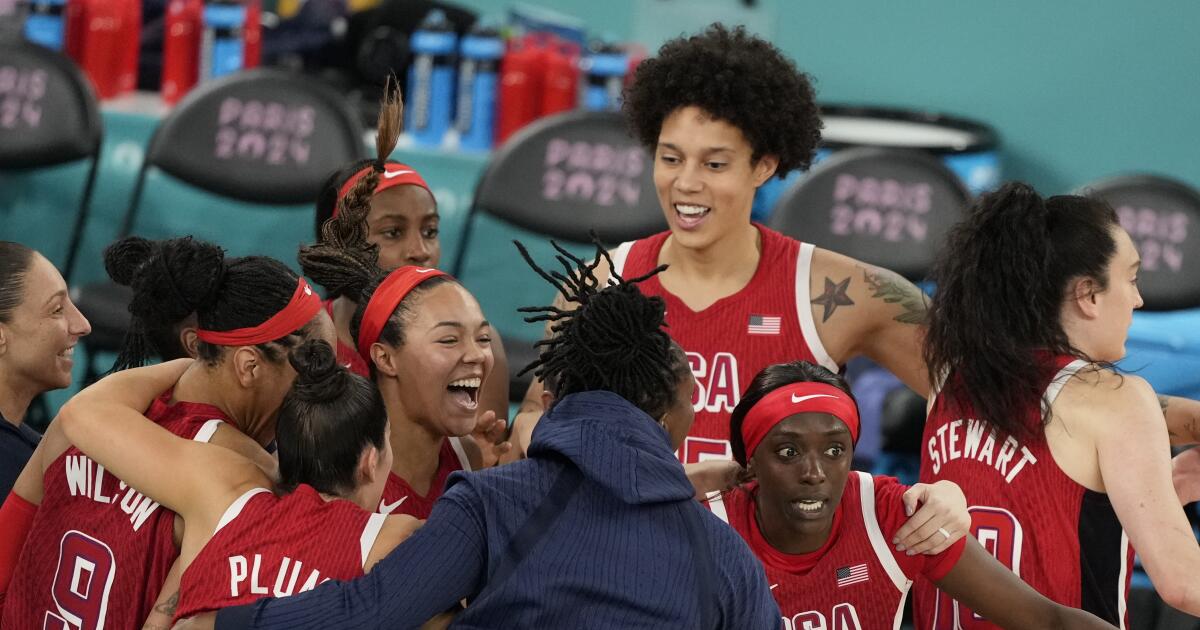
It’s not easy making history.
The United States survived a scare from France to win an unprecedented eighth consecutive Olympic gold medal Sunday with a 67-66 victory at Bercy Arena. The Americans trailed by 10 in the third quarter, never led by more than eight and won by inches as French star Gabby Williams momentarily thought she knocked down a three-point shot at the buzzer to send the game to overtime.
2024 Paris Summer Olympic Games
When referees said her toe was on the line, she covered her mouth in disbelief. Her eyes started filling with tears.
Brittney Griner pointed to the spot on the floor during the U.S. celebration with a relieved grin on her face.
A gold medal would have been the ultimate exclamation point on a triumphant Olympics for the host nation. France is already celebrating its largest medal haul in more than a century. But the home team was agonizingly close to its first Olympic gold in basketball with the men’s and women’s teams both advancing to the final. Despite basketball’s steady globalization, the United States asserted its continued dominance as the U.S. women remained undefeated in Olympic play since 1992, a streak of 61 games.
“History doesn’t earn you another one,” said Diana Taurasi, who earned her record sixth Olympic gold medal but didn’t play in the final. “You got to go and earn it.”
Led by Las Vegas Aces star A’ja Wilson’s 21 points, 13 rebounds and four blocks, the United States fended off an inspired French team that was fueled by the energy of a crowd hoping to win the nation’s first Olympic basketball gold medal.
France dictated the pace of play early with a suffocating defense. The United States looked frantic and frazzled. The Americans turned the ball over 13 times in the first half compared to eight made field goals. France ran off 10 consecutive points to begin the second half.
The team that had dominated teams for more than three decades looked lost with Wilson and Breanna Stewart missing point-blank shots. The leading scorers entered the game each averaging at least 18 points a game on a combined 62% shooting. The linchpins of U.S. basketball started Sunday’s game a combined three-for-16 from the field.
The Americans instead got a lift from new faces. After leading the United States to a 3×3 Olympic gold medal in Tokyo, Kelsey Plum scored or assisted on every point of an 8-0 third-quarter run. Olympic rookie Kahleah Copper changed the game with her grit and energy off the bench and finished with 12 points and five rebounds. Fellow Olympic rookie Sabrina Ionescu assisted Collier on two layups that helped the Americans reclaim a two-point lead going into the fourth quarter.

Sabrina Ionescu celebrates after the United States’ win over France on Sunday.
(Michael Conroy / Associated Press)
After the final buzzer, U.S. players celebrated with a star-studded courtside row that included U.S. women’s basketball legends Dawn Staley and Lisa Leslie. Plum, who said she knows all the U.S. players who have worn her No. 5 jersey for the national team, shared a look with three-time Olympic champion and fellow No. 5 jersey Seimone Augustus, who watched from the stands.
In the mixed zone after the game, Taurasi passed an imaginary torch to Ionescu. Taurasi will not be back in the Olympics — the Chino native said she will attend the Los Angeles 2028 Games from the beach with a beer — but she knows players like Ionescu will be.
“I’m ready,” Ionescu said. “I think being able to learn from a lot of the veteran players here, knowing it’s kind of my time and a lot of our times, that this younger generation is able to kind of take this legacy and continue to push forward and go for nine.”
Sports
U.S. men win 4×400 relay for third consecutive Olympics

SAINT-DENIS, France — Everything that makes Rai Benjamin such an effective anchor leg was on display. Required by the task.
Officially, he had a quarter-of-a-second lead when he got the baton from Bryce Deadmon. It took a monster 43.54-second run from Deadmon to drag the U.S. from third place to a small lead. The anchor just had to do what he does. Close.
Here is the major problem Benjamin had this time: Letsile Tebogo of Botswana. The same sprinter who ran the men’s 200-meter final in 19.4 seconds to win gold.
“I run the 400 hurdles,” Benjamin said, “so I’d like to think that my engine is bigger than his. But nineteen-four? We cannot sleep on that.
“And just the sheer talent that he has. … That’s generational right there. The kid’s freaking great.”
So it was time for Benjamin’s experience to kick in. For his strategy. For his speed. For his patience and poise.
For his loyalty.
“Somebody cracked a joke in there … that had to do with Noah (Lyles),” Benjamin said. “Oh they cracking jokes? … You guys about to get punished right now.”
Rai Benjamin holds off Letsile Tebogo to anchor Team USA to gold in the 4x400m relay! #ParisOlympics
📺 NBC & Peacock pic.twitter.com/MhJbrRH43D
— NBC Olympics & Paralympics (@NBCOlympics) August 10, 2024
The men’s 4×400 relay has been contested now in 26 Olympiads. America has won 19 of them, including nine of the last 11.
This comes one night after the 4×100 relay team — featuring some of the fastest men in the world — squandered their chance at gold. After getting disqualified for the first exchange happening out of the zone, American sprint legend Carl Lewis demanded an overhaul of that relay program, which hasn’t won a medal since 2004 or a gold since 2000.
“They know my number if they want me,” said sprint legend Maurice Greene, part of the last gold medal 4×100 relay team. “It’s just terrible. There’s no reason why we shouldn’t have won.”
But those problems don’t extend to the other relay. (Of course, the hand-offs are far less intense when you have an entire lap to run.)
The 400-meter runners aren’t the most glorified of America’s sprinters. They’re gold medalists and record holders in their own right. But their names aren’t on the marquee of USA Track and Field. Yet they’ve consistently gotten the job done.
The Paris Games proved to be no different. But it wasn’t easy.
The gamesmanship began early. In the call room before the runners took the track, Benjamin said Botswana organized as if Tebogo wasn’t running anchor. The ploy didn’t work, though. They all knew Tebogo would finish.
“And I knew it was gonna be a fight coming home,” Benjamin said, “so it was probably my most calculated anchor leg that I’ve run since I’ve been anchoring this relay for the past couple (of) years.”
Benjamin clarified the joke about Lyles was harmless and it wasn’t Botswana. He wouldn’t say anything more than it wasn’t anything offensive or derogatory. Just part of the mind games that go on behind the scenes, and that he didn’t like it. Because in the throes of competition, any banter is a salvo. It’s all motivation.
GO DEEPER
Rai Benjamin claims his first Olympic gold in men’s 400m hurdles
It takes more than mind games to beat Benjamin, who couldn’t remember the last time he lost a relay in which he anchored.
“Maybe in high school,” he said. “Maybe.”
He now has two Olympic championships as the anchor, including the last Olympics in Tokyo. He also has two gold medals from the World Championships as anchor. And two NCAA championships, outdoor and indoor, as anchor.
Is he America’s greatest closer ever?
“Michael Norman,” Benjamin said after a pregnant pause. “Yes. You’ve seen Michael Norman flat-out run forty-three-oh in Sacramento. Straight gas. Look it up.”
Indeed, Norman ran a 43.06 for USC in the NCAA West preliminary round at Sacramento State in 2018. Benjamin ran the first leg in that race.
“When Michael’s healthy and he’s firing on all cylinders,” Benjamin said. “A dangerous guy.”
On this night, the dangerous guy was Tebogo, and all the U.S. had was Benjamin. He played a perfect game of chess, knowing the 400 meters is uncomfortably long for the elite sprinter from Botswana. Benjamin went fast enough so Tebogo had to work hard and drain some energy. But Benjamin couldn’t go too fast so as not to burn himself out. He was going to need his closing speed.
For 200 meters, with Tebogo’s breath on his neck, Benjamin worked his strategy. He stayed patient, focused on himself and his race. He didn’t look up at the jumbotron to monitor Tebogo. Benjamin let his feel and instincts guide him. Then, at the right time, “just kick like hell coming home.”
Tebogo’s speed was countered. Benjamin’s lead was preserved. And the gold medal was America’s.
“Because,” Vernon Norwood said of Benjamin, “he’s Captain America.”
Required reading
(Photo: Hannah Peters / Getty Images)
-
Fitness1 week ago
For healthy aging, light exercise or sleep beats being sedentary
-

 World1 week ago
World1 week agoThe Take: Is Silicon Valley going MAGA?
-

 News1 week ago
News1 week agoVideo: Biden and Harris Greet Americans Released From Russia
-
/cdn.vox-cdn.com/uploads/chorus_asset/file/25416392/STK473_NET_NEUTRALITY_CVIRGINIA_D.jpg)
/cdn.vox-cdn.com/uploads/chorus_asset/file/25416392/STK473_NET_NEUTRALITY_CVIRGINIA_D.jpg) Technology1 week ago
Technology1 week agoNet neutrality is on ice
-
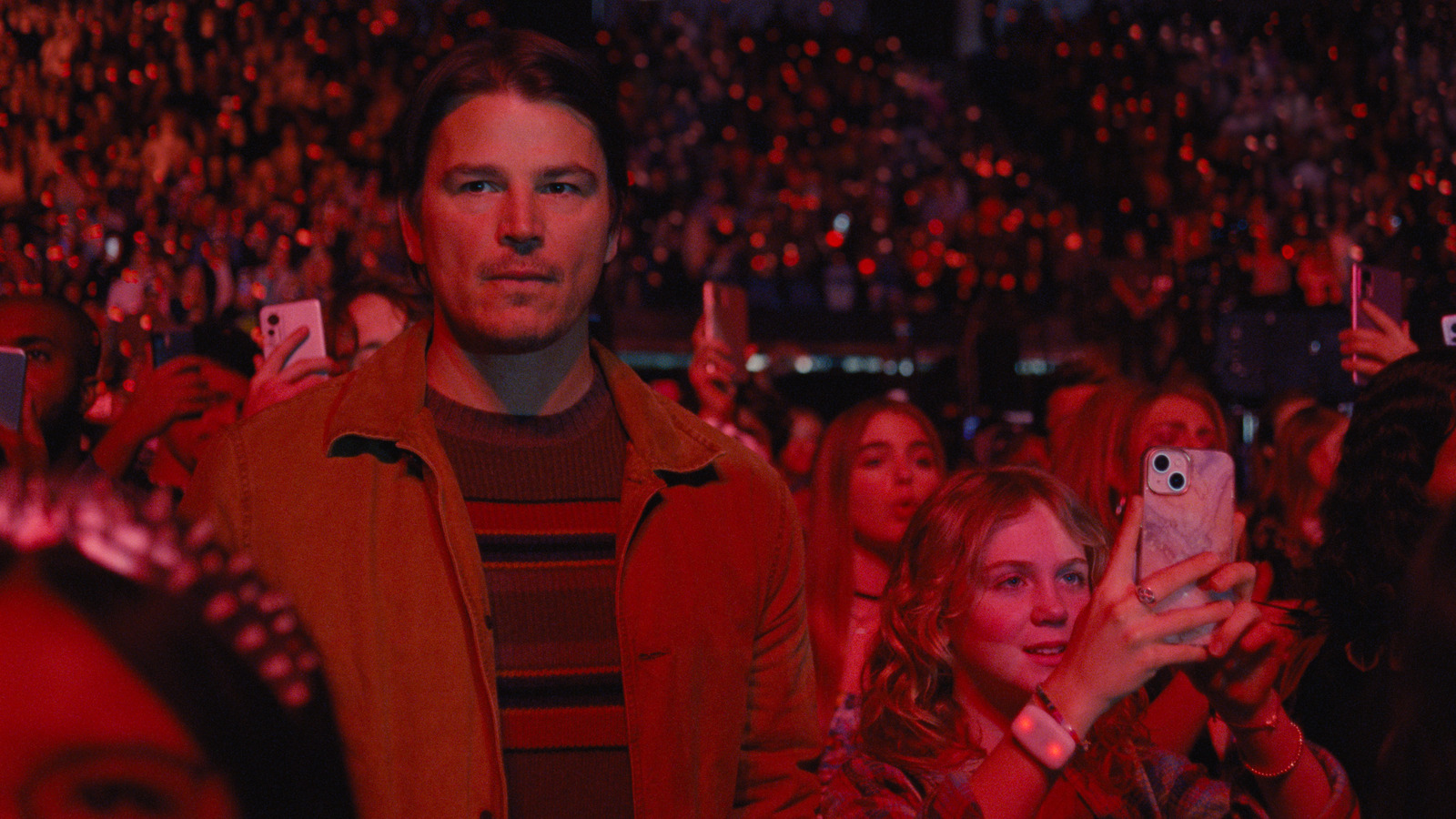
 Movie Reviews1 week ago
Movie Reviews1 week agoTrap Review: M. Night Shyamalan’s Silly, Self-Aware Thriller Is A Messy Tale Of Two Movies – SlashFilm
-
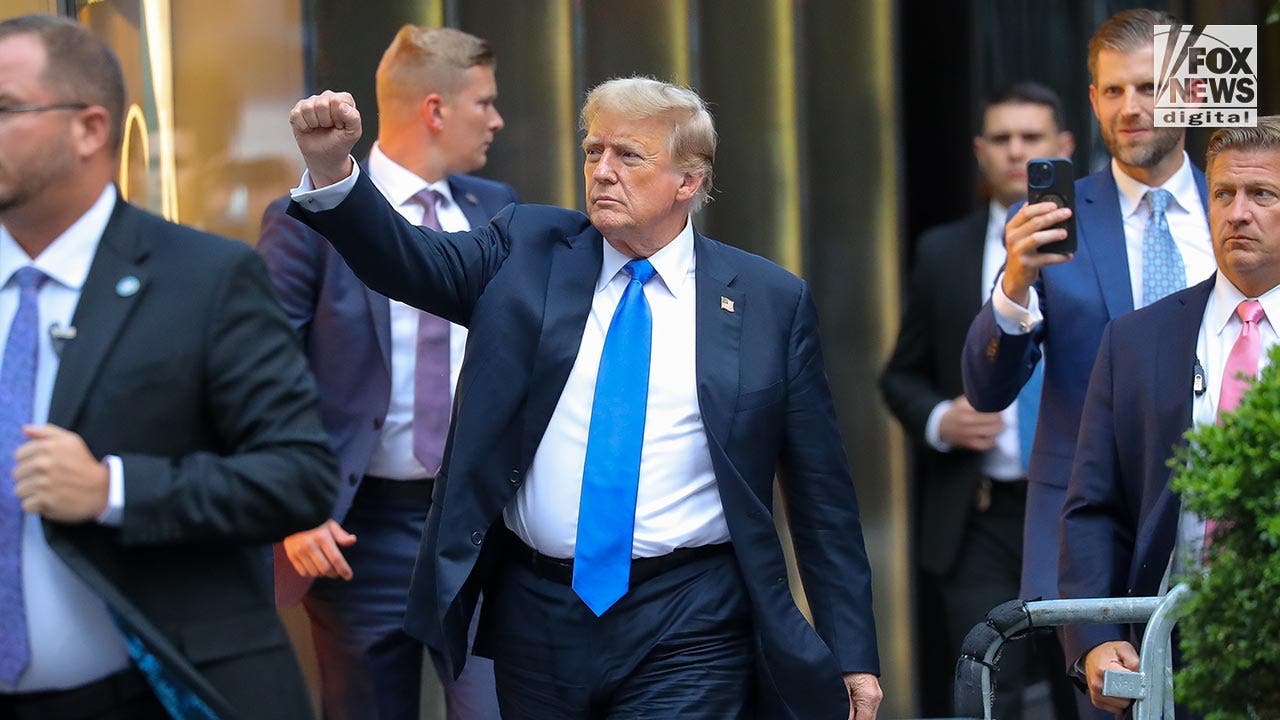
 Politics1 week ago
Politics1 week agoTrump replies to DA Bragg in case to get conviction tossed in light of Supreme Court immunity decision
-
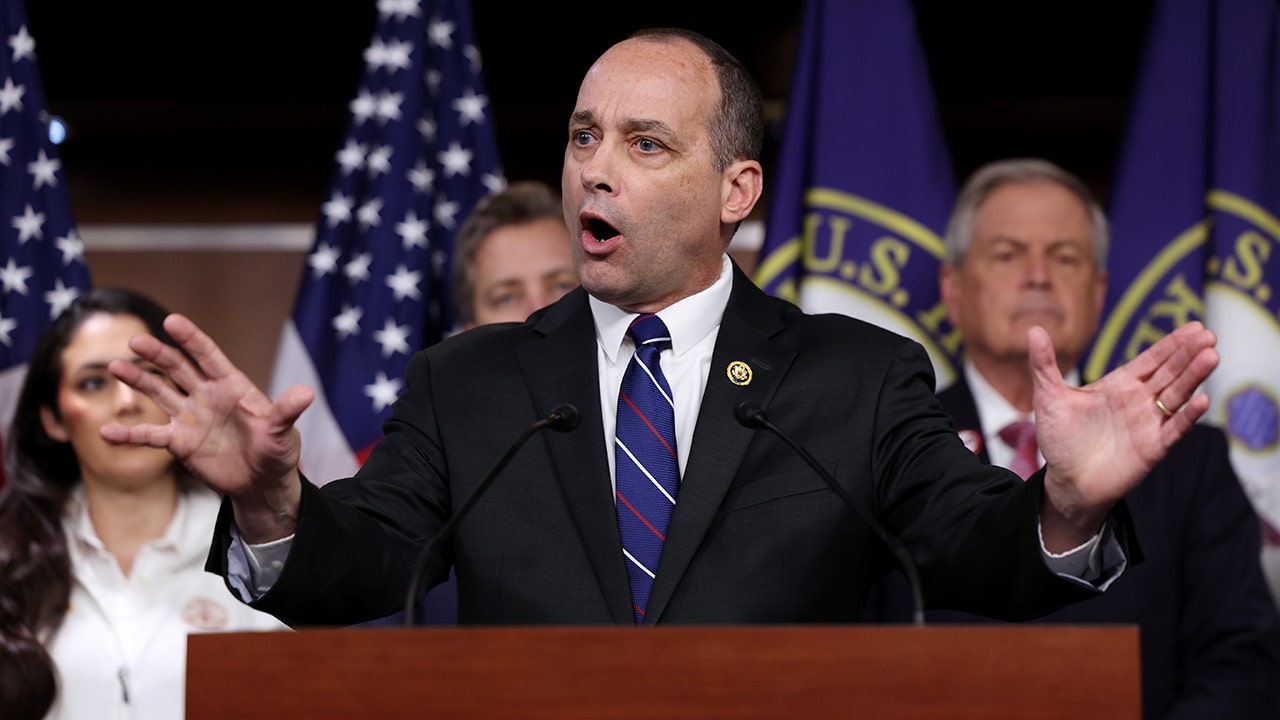
 Politics1 week ago
Politics1 week agoHouse Freedom Caucus chair ousted by Trump-backed challenger in Republican primary showdown
-
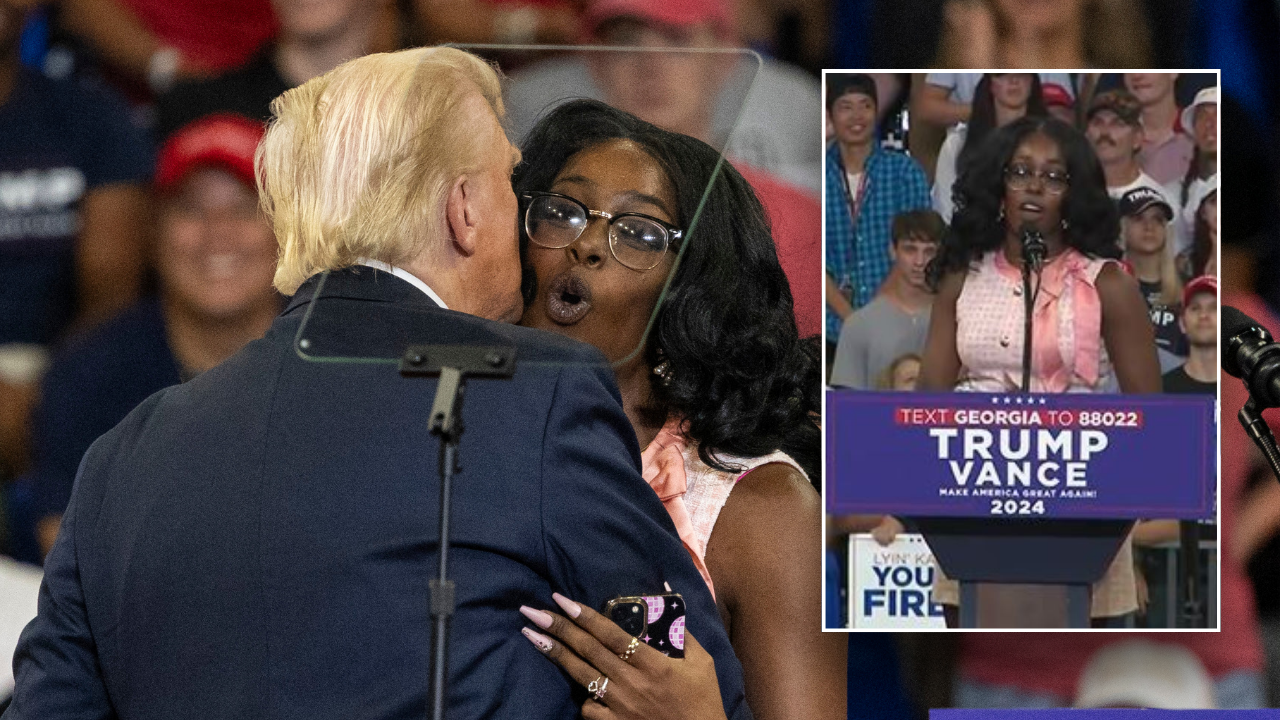
 Politics1 week ago
Politics1 week agoGeorgia activist steals the show after being introduced by Trump at Atlanta rally: 'Incredible'


